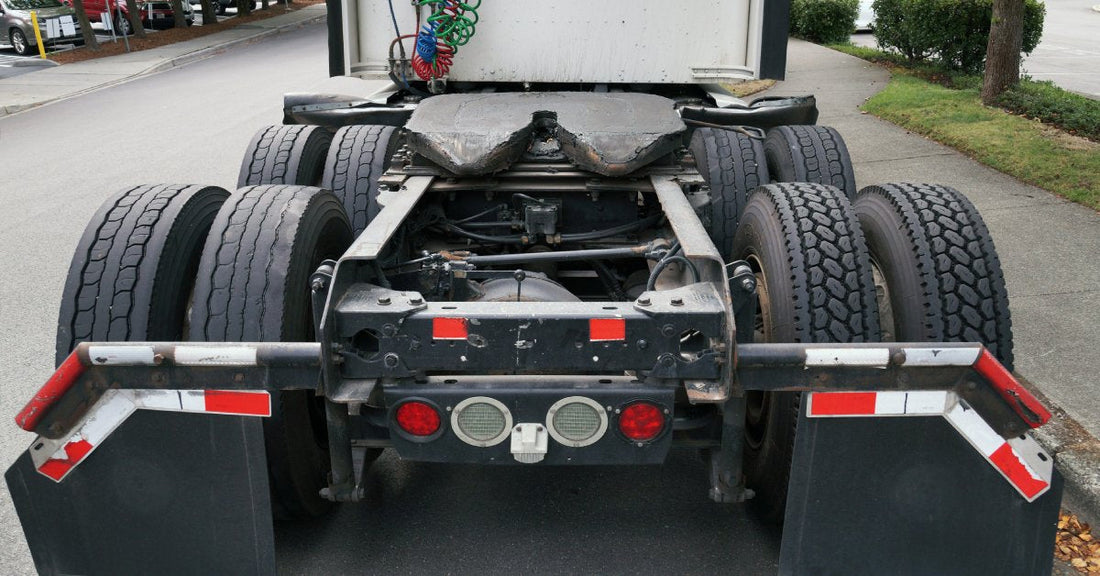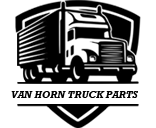
Loose Nut Indicator: What It Is and How To Use It
Semi-truck maintenance requires precision, efficiency, and the right diagnostic tools to keep your fleet running safely on the road. Among the many components that demand regular attention, wheel nuts can lead to catastrophic failures if operators overlook common signs of damage. Before you send your operators on their next delivery, learn how to use a loose nut indicator to fix these systems if your vehicles require severe tire maintenance.
Understanding the Loose Nut Indicator System

Loose nut indicators transform how fleet operators manage their vehicle safety protocols. This innovative system provides clear visual feedback that helps drivers and maintenance crews identify potential problems during routine inspections.
Basic Components and Design
Modern loose nut indicators feature durable plastic or metal construction that can withstand harsh road conditions and extreme temperatures. The indicators attach directly to wheel nuts using specialized mounting hardware that won’t interfere with normal wheel operation. Most indicators incorporate bright colors such as orange, yellow, or red to improve visibility during inspections.
How the System Works
When wheel nuts remain properly tightened, the indicators maintain their original alignment pattern. Any rotation or movement of the wheel nuts causes the indicators to shift position, creating a visual misalignment that alerts operators to potential loosening. This mechanical approach eliminates the need for electronic sensors or complex monitoring systems.
Types of Loose Nut Indicators
Fleet operators can choose from several indicator designs based on their specific needs and vehicle configurations. For example, single-piece indicators attach to individual nuts and provide focused monitoring for wheel positions. Multi-piece systems connect multiple nuts with alignment strips that reveal movement across the entire wheel assembly.
Some advanced models include temperature-resistant materials and enhanced visibility features for extreme operating conditions. Choose a loose nut indicator that best works with your routine maintenance process to accurately measure your semi-truck components.
Installation Process and Best Practices
Proper installation of your loose nuts requires attention to detail and adherence to manufacturer specifications. Before beginning installation, maintenance teams must verify that all wheel nuts meet proper torque specifications and show no signs of damage or wear.
Clean all nut surfaces thoroughly to remove dirt, grease, and debris that could interfere with indicator attachment. Also, inspect the wheel assembly for cracks, corrosion, or other structural issues that might affect indicator performance.
Start the installation process by positioning the vehicle on level ground and engaging the parking brake to prevent movement during the procedure. Then, remove any existing wheel covers or decorative elements that might obstruct access to the wheel nuts. Attach the loose nut indicators according to manufacturer instructions. Each indicator should sit flush against the nut surface for proper alignment with adjacent indicators.
After completing the installation, conduct a comprehensive inspection to verify that all indicators remain securely attached and properly aligned. Test the system by checking that indicators move freely without binding or interference from surrounding components. For future reference, document the installation date and initial configuration to establish baseline measurements.
Daily Inspection Procedures and Techniques
Regular inspection routines improve the effectiveness of loose nut indicators by identifying problems during their earliest stages. These procedures require minimal time and provide maximum safety benefits for your fleet operations.
Drivers should incorporate loose nut indicator checks into their standard pre-trip inspection routine by examining each wheel assembly for signs of indicator movement or misalignment. Look for indicators that appear rotated, tilted, or displaced from their original positions. Wheels that experience higher stress loads, such as drive axles and trailer tandems, will show signs of wear and tear quicker than other components, so monitor these parts closely.
Position yourself at wheel level to accurately assess the indicator alignment and detect subtle changes that might indicate developing problems. In dark conditions, use a flashlight or other supplemental lighting when inspecting indicators.
Maintenance and Replacement Guidelines

Loose nut indicators require ongoing maintenance for continued effectiveness and reliability throughout their service life. You can prevent indicator failure and maintain the integrity of your wheel monitoring system by discovering how to use your loose nut indicator in between repairs.
Routine Maintenance Tasks
Clean your indicators regularly using mild soap and water to remove road grime, salt, and other contaminants that can obscure visibility or affect indicator movement. Along with a thorough cleaning, inspect indicator mounting hardware for signs of loosening, corrosion, or damage that might compromise attachment security.
Replacement Intervals and Criteria
Most loose nut indicators require replacement every 12 to 18 months, depending on operating conditions and exposure to harsh environments. Any signs of cracking, fading, or mechanical damage could affect their ability to provide accurate visual feedback. Consider replacing entire indicator sets simultaneously to maintain consistency in appearance and performance characteristics.
Storage and Inventory Management
Always have adequate inventory levels of replacement indicators on hand to minimize downtime when replacements become necessary. When not in use, store indicators in a cool, dry location away from direct sunlight and extreme temperatures that might degrade their material properties. Organizing your inventory by vehicle type and wheel configuration will streamline the replacement process during routine maintenance activities.
Advanced Applications and Fleet Integration
Modern fleet operations can leverage loose nut indicators as part of comprehensive maintenance management systems that improve safety and operational efficiency. These advanced applications extend the value of indicator systems beyond basic visual monitoring.
Integration With Maintenance Software
Fleet management software can incorporate loose nut indicator inspection data to track trends, schedule maintenance activities, and generate compliance reports. Digital inspection forms capture indicator status information and automatically flag vehicles requiring attention. This integration promotes maintenance workflows and improves documentation accuracy.
Training and Certification Programs
Comprehensive training programs give drivers and maintenance personnel a proper understanding of indicator inspection techniques and response procedures. Make sure to develop standardized training materials that cover installation, inspection, and troubleshooting procedures. Implement certification requirements that verify competency in indicator system operation and maintenance.
Performance Monitoring and Analysis
It’s a smart idea to collect and analyze indicator performance data to identify patterns that might indicate systemic issues or opportunities for improvement. You can track indicator replacement rates, false positive incidents, and maintenance costs to optimize system performance. With this information, you’ll be able to refine inspection procedures and enhance your overall fleet safety programs.
When you need tools and components for semi-truck maintenance, work with the professionals at Van Horn Truck Parts. Along with loose nut indicators, we carry a wide variety of wheel end parts that are compatible with most vehicles and offer boosted longevity and support. To learn more about our products and services, get in touch with our experts today.

